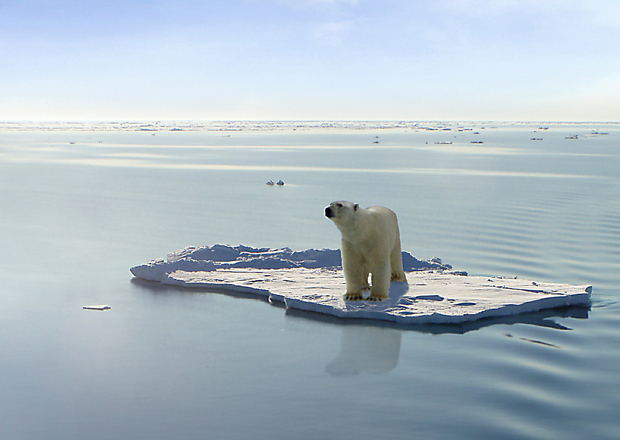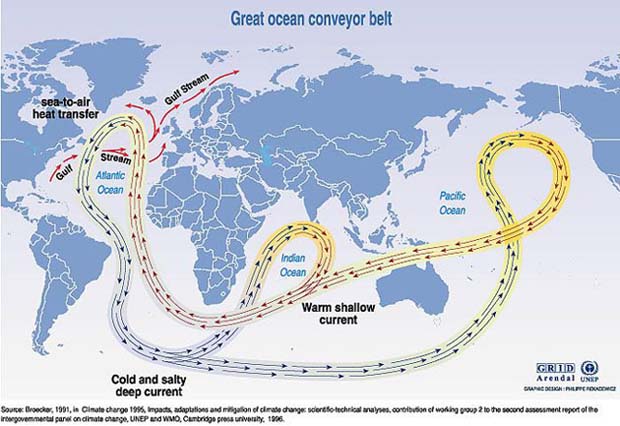February, 2015 / Source: Oregon State University
[dropcap]A[/dropcap] report to be published Thursday in the journal Nature suggests that global warming may increase upwelling in several ocean current systems around the world by the end of this century, especially at high latitudes, and will cause major changes in marine biodiversity.
Since upwelling of colder, nutrient-rich water is a driving force behind marine productivity, one possibility may be enhancement of some of the world’s most important fisheries.
However, solar heating due to greenhouse warming may also increase the persistence of “stratification,” or the horizontal layering of ocean water of different temperatures. The result could be a warm, near-surface layer and a deep, cold layer.
If this happens to a significant extent, it could increase global “hypoxic,” or low-oxygen events, decouple upwelling from the supply of nutrient-rich water and pose a significant threat to the global function of fisheries and marine ecosystems.
The projected increase in upwelling, in other words, appears clear and definitive. But researchers say its biological impact is far less obvious, which is a significant concern.
These upwelling systems cover less than 2 percent of the ocean surface, but contribute 7 percent to global marine primary production, and 20 percent of global fish catches.
“Our modeling indicates that normally weaker upwelling toward the polar ends of upwelling-dominated regions will strengthen,” said Bruce Menge, the Wayne and Gladys Valley Professor of Marine Biology in the College of Science at Oregon State University, and co-author of the report.
“Ordinarily, you would expect that an increase in upwelling would mean an increase in marine coastal productivity, and that might happen,” Menge said.
“However, a thicker and warmer top later, and more stratified ocean waters may put the cold, nutrient-rich waters too deep for upwelling to bring them up, and reduce the ability of upwelling to energize the coastal ocean food web,” he said. “This could have a very negative impact on marine production and fisheries.”
The findings were made by researchers from OSU and Northeastern University, in work supported by that university and the National Science Foundation.
Another possibility, the study concluded, are changes in the frequency or severity of low-oxygen, or hypoxic events such as those that have plagued the Pacific Northwest in the past decade. Depending on where the layers of warm and cold water end up, as well as local subsea terrain and currents, the hypoxic events could become either less common or more severe. In a hypoxic event, microbial decay of phytoplankton blooms uses up the available oxygen, causes hypoxia, and often leads to a die-off of fish and other marine organisms.
Among the findings of the study:
* The change in upwelling may be more pronounced in the Southern Hemisphere, due to the local influences of land masses, coastline, water depth and other issues.
* Major current systems will be affected off the western coasts of North America, South America, Africa and parts of Europe.
* The general increase in upwelling is going to be driven by a strengthening of alongshore winds, due to a differential in land and ocean heating.
* At high, but not low latitudes, the upwelling season will start earlier, last longer and be more intense.
* At tropical and sub-tropical latitudes, upwelling will become almost a year-round phenomenon.
* The findings are consistent with different research which shows that coastal upwelling has intensified over the past 60 years.
* Impacts on the California Current System are expected to be less pronounced because of other climatic forces at work, such as the Pacific Decadal Oscillation, the El Nino-Southern Oscillation, and the North Pacific Gyre Oscillation.
Researchers said that by understanding these climate-mediated “hotspots” in upwelling, and how they will change in the future, it may be possible to better manage productive fisheries and coastal ecosystems around the world.
[information]
The above story is based on materials provided by Oregon State University. Note: Materials may be edited for content and length.
Journal Reference:
Daiwei Wang, Tarik C. Gouhier, Bruce A. Menge, Auroop R. Ganguly. Intensification and spatial homogenization of coastal upwelling under climate change. Nature, 2015; 518 (7539): 390 DOI: 10.1038/nature14235
Cite This Page:
Oregon State University. “Global warming to increase ocean upwelling, but fisheries impact uncertain.” ScienceDaily . . .
[/information]




